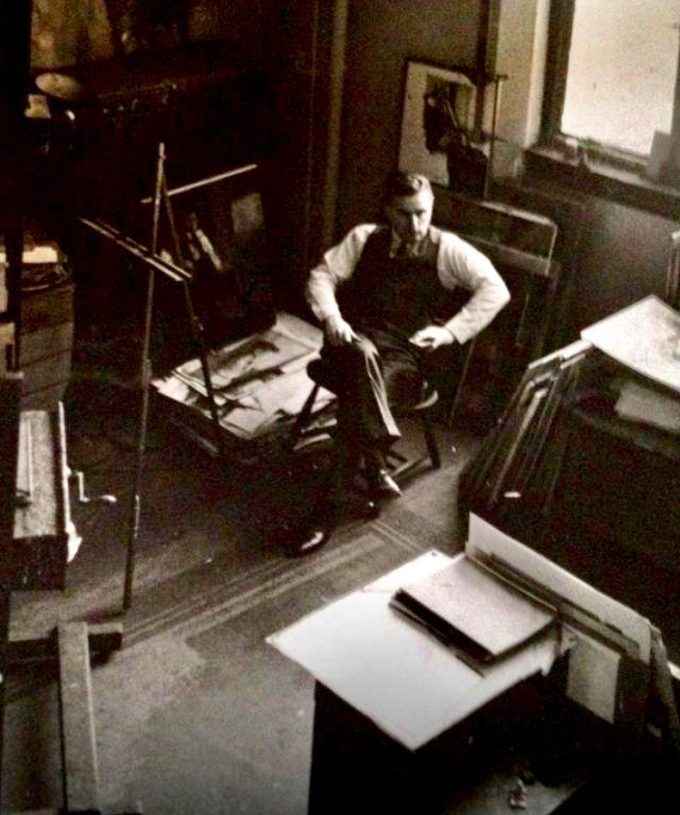Nick de Angelis (1921 - 2004) Works

Nick de Angelis (1921 - 2004)
Nick de Angelis was an American artist who lived and worked most of his life in New York City. Born Nicholas Angelo in 1921 in New Jersey, Nick later changed his last name to his family’s original name of "de Angelis". After a long career as a New York ad agency illustrator working during the day and painting at night, de Angelis decided to dedicate his life solely to painting and sculpting beginning in the 1960s.
In his early career as an artist, de Angelis painted watercolors of street life, Paris café scenes, the Seine and of New York City coffee houses. His artistic style evolved significantly over the years, morphing from realistic to the highly abstract. Some believe de Angelis’ work rivaled Pablo Picasso and Francis Bacon, the latter of whom was one of de Angelis’ strongest artistic influences.
He worked in whatever media and material was close at hand: brushes, sticks, sponges, wires, even feathers. Pieces of pipe and metal de Angelis found on his long, midnight walks inspired him to create works combining man and machine. He moved easily from using delicate pastels, to bright and clashing primary colors, to somber blacks and grays. His portraiture, including his self-portraits, reflect much of the pain he experienced in his personal life, particularly when he served in the U.S. Army during World War II where he was wounded and awarded the Purple Heart.
De Angelis had an infallible instinct for form, space and line. His ability to envision the future was uncanny. His avant-garde images were conceived years before high tech, robots and/or computer gaming. His most powerful works were done in de Angelis’ later years, featuring dynamic paintings and sculptures of men and menacing robotic animals.
He was a life member of the Art Students League of New York and a life member of the American Watercolor Society (AWS), where de Angelis was appointed Vice President, Jury member of the AWS for group shows and traveling exhibitions to National Museums.
His work has been exhibited internationally, most particularly in Germany, and he was represented by a well-known gallery in New York City. Nick stopped showing his work publicly after a contentious dispute with the gallery’s owner, whose private collection held nine of de Angelis’ pieces.
After his death in 2004 of pancreatic cancer, de Angelis’ third wife, Josiane, was left with a monumental body of artwork representing nearly forty years of de Angelis’ solitary work, most of which had never been shown to the public.

